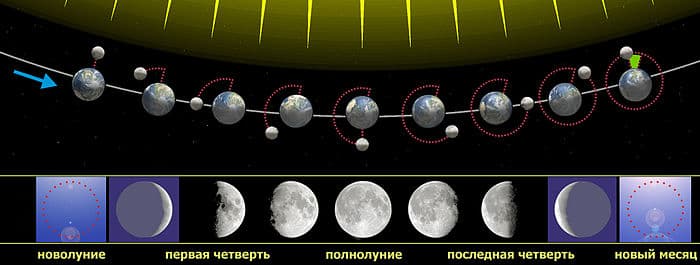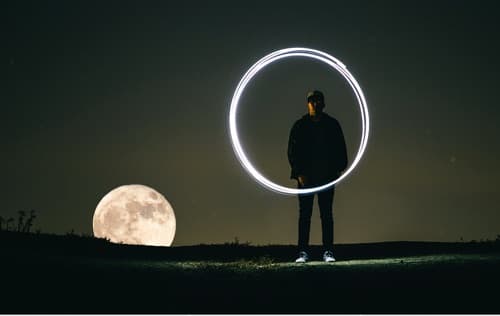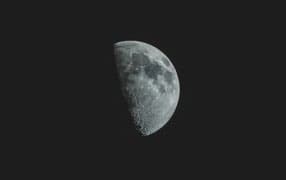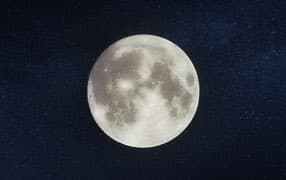One half of the moon is illuminated by the sun at all times. However, we usually see only part of the moon - a crescent, say, or a half-moon. The visible part is known as a phase of the moon.
Everyone knows the new moon, when the moon cannot be seen at all, and the full moon, when it is fully visible. Between these two extremes, the moon waxes and wanes so that we see just a part, such as a crescent.
Why does the moon change phase?
The phases of the moon occur because the moon revolves around the Earth. Each orbit takes 29.5 days. Meanwhile, the Earth rotates on its axis, bringing the moon into view during part of the night or day. The position of the moon in its path around the Earth determines whether we see a full moon, a partial moon or no moon at all.
Why do we sometimes see the full moon, sometimes no moon, and sometimes a crescent?
Imagine the sun, the moon and the Earth lined up in that order. We cannot see the moon, because the sun is illuminating the side of the moon that faces away from us.
When the moon is beyond the Earth, however, we see a full moon.
Because the moon takes approximately 29.5 days to orbit the Earth, the phases of the moon change very gradually.
This, incidentally, is why a lunar month is equal to 29 days.

What are the different phases called?
The phases are normally distinguished as follows:
- New moon: — the beginning of the lunar month, when no moon is visible;
- Waxing crescent: — the first appearance of the moon after the new moon, in the shape of a narrow sickle;
- First quarter: — one half of the moon is illuminated;
- Waxing gibbous moon;
- Full moon: — the whole of the moon is illuminated;
- Waning gibbous moon;
- Last quarter: — one half of the moon is again illuminated;
- Waning crescent.
There is typically one full moon in each calendar month. However, because the lunar cycle goes round at a rate of just over twelve times a year, occasionally a month will have a second full moon. This is known as a blue moon.
When does the lunar month begin?
The lunar month begins at the new moon and ends when the next new moon arrives.
How is the lunar day reckoned?
The lunar day runs from moonrise on one day to moonrise on the next. At new moon, the lunar day begins at the same time as the new moon.
How does the lunar cycle affect people?
Many different mystical and religious systems assert that the moon can affect human mood and wellbeing.
Statistical studies have also sometimes confirmed a link between our mental state and the phase of the moon. For example, a four-year study of three British police stations showed a clear link between the moon and the crime rate(source).
If you would like to learn more, read our articles on this topic. All our articles are based strictly on evidence and primary sources; there are no invented facts or unverified data.
What can the lunar cycle do for me?
The phases of the moon can help you choose the right day to visit the hairdresser’s, plant out in the garden, or simply observe as your life gradually changes for the better. Here’s how:
All our moon data are science-based, and we provide links to the data sources.


